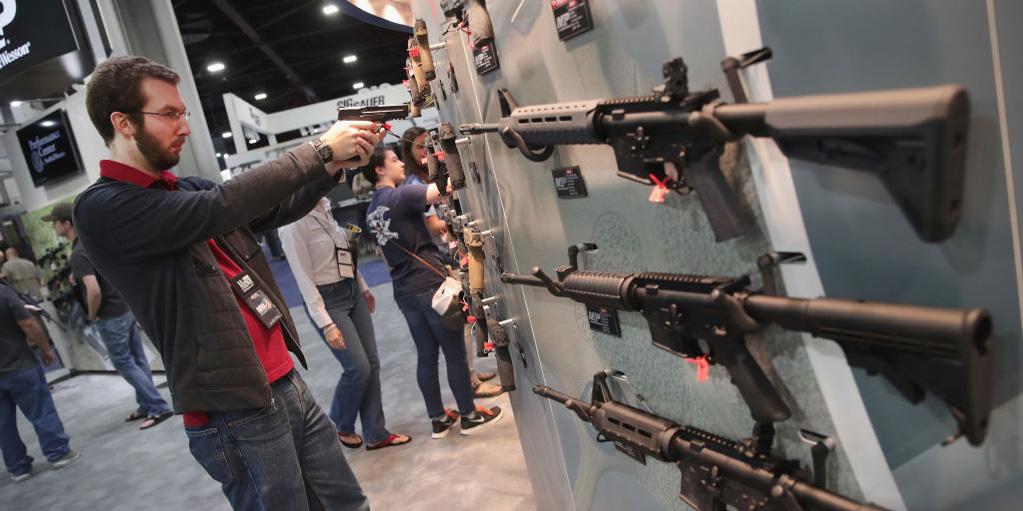These four countries have nearly eliminated gun deaths - here's what the US can learn

On Wednesday, a gunman opened fire at a Florida high school, leaving 17 people dead and more than a dozen others injured.
In November, a gunman went on a shooting spree at the Rancho Tehama reserve in Northern California, killing four people and injuring three children.
A week before that, a man in Sutherland Springs, Texas, stormed a church with a semiautomatic rifle, killing 26 people and injuring 20.
A month before that, a gunman in a room on the 32nd floor of the Mandalay Bay hotel in Las Vegas shot at concertgoers below, killing 59 people and injuring more than 500.
As shootings like these seem to escalate in the US, so do questions about gun control. Americans who fear their town or city could be the site of the next attack wonder what strategies if any the US could take to reduce rates of gun violence.
No country is a perfect analog of the US, but several have taken steps that worked for them — here are their insights.
Australia paid citizens to sell their guns to the government.
A spate of violence in the 1980s and '90s that culminated in a 1996 shooting that left 35 dead led Australian Prime Minister John Howard to convene an assembly to devise gun-control strategies.
The group landed on a massive buyback program, costing hundreds of millions of dollars offset by a one-time tax increase, that bought and destroyed more than 600,000 automatic and semiautomatic weapons and pump-action shotguns.
Over the next few years, gun-death totals were cut nearly in half. Firearm suicides dropped to 0.8 per 100,000 people in 2006 from 2.2 in 1995, while firearm homicides dropped to 0.15 per 100,000 people in 2006 from 0.37 in 1995.
A US buyback would mean destroying more than 40 million guns — but at the state level, the undertaking might not be so massive.
Japan puts citizens through a rigorous set of tests.
Japan, which has strict laws for obtaining firearms, seldom has more than 10 shooting deaths a year in a population of 127 million people.
If Japanese people want to own a gun, they must attend an all-day class, pass a written test, and achieve at least 95% accuracy during a shooting-range test.
Then they have to pass a mental-health evaluation at a hospital, as well as a background check, in which the government digs into any criminal records or ties and interviews friends and family members.
Finally, they can buy only shotguns and air rifles — no handguns — and must retake the class and the initial exam every three years.
Unlike in the US, Japanese law has long outlawed guns. Still, the wisdom from Japan seems to be that tighter regulations keep guns confined only to those fit to use them.
Florida shooting – in pictures
Show all 10Norway exemplifies the power of social cohesion and trust.
Compared with the US, Norway has about one-third of the number of guns per 100 civilians — and about one-tenth of the rate of gun deaths per 100,000 people.
Sociologists who study the Nordic model have found that social cohesion between citizens and the government goes a long way toward ensuring a (mostly) peaceful society.
For example, an analysis in 2015 found that the number of fatal shootings by police in Norway in the past nine years was less than the number of fatal shootings by US police officers in one day.
Gummi Oddsson, a cross-cultural sociologist from Northern Michigan University, has found that Nordic governments go to great lengths to build trust in local communities.
He told Business Insider that US states could look to strengthen a sense of trust through measures like community policing, a tactic that emphasizes partnership between law enforcement and communities.
The thinking goes that people will begin to feel safer around the police, who will then have a better understanding of the neighborhood and be able to address problems before they happen.
The UK took a multipronged approach.
The UK's approach that combines elements of those of the other three countries.
Around when Australia adopted its gun regulations, Parliament passed legislation banning private ownership of handguns in Britain and banned semiautomatic and pump-action firearms throughout the UK. It also required shotgun owners to register their weapons.
A $200 million buyback program led to the government's purchase of 162,000 guns and 700 tons of ammunition from citizens.
GunPolicy.org estimates that in 2010 there were 3.78 guns per 100 people in the UK, while the US, meanwhile, is estimated to have 101 guns per 100 people.
The result has been roughly 50 to 60 gun deaths a year in England and Wales, which have a population of 56 million. Compare that to the US, a country about six times as large that has more than 160 times as many gun-related homicides.
Read more:
• This chart is easy to interpret: It says we're screwed
• How Uber became the world's most valuable startup
• These 4 things could trigger the next crisis in Europe
Read the original article on Business Insider UK. © 2016. Follow Business Insider UK on Twitter.
Subscribe to Independent Premium to bookmark this article
Want to bookmark your favourite articles and stories to read or reference later? Start your Independent Premium subscription today.

Join our commenting forum
Join thought-provoking conversations, follow other Independent readers and see their replies